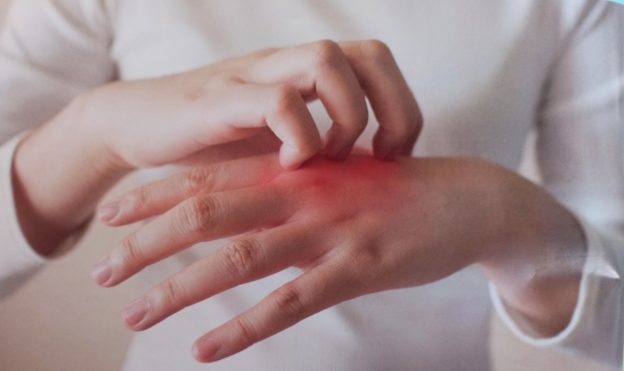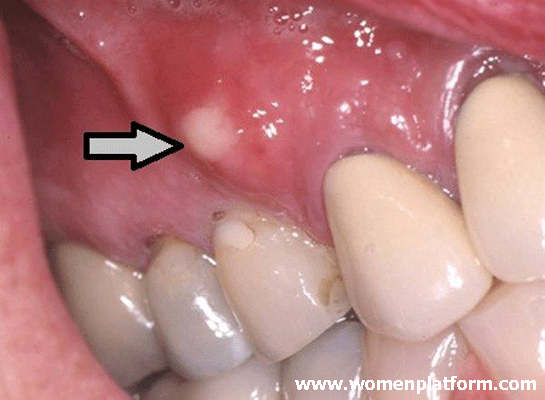Hand Eczema

Our hands are at the forefront of our social interaction and their appearance is important. However, when the weather starts to cool down, our hands start to dry up, causing chapping and even bleeding. Hand eczema, which is an allergic reaction seen
in both adults and children, is a disease that can both be treated and prevented with simple precautions.
What is eczema and hand eczema?
Eczema is an itchy skin disease that causes redness, scaling, and blisters. Hand eczema is where the eczema forms in the palms, fingers and/or the back of the hand. It
causes dryness, redness, peeling, sweating, irritation and sometimes pain
What causes hand eczema?
When hands are subjected to water, cold, dry air, cleaning materials containing irritants, chemical substances, plastic gloves and soil, they can become irritated.
The skin reacts to this irritation in the form of redness, blisters, itching and pain. Chronic hand eczema due to repetitive and long-term eczema can cause calluses, chapping and bleeding.
What are the symptoms of hand eczema?
In the first stages (acute), eczema causes redness, blistering, sweating and scabbing that results in flaking. During the subacute phase (after the acute phase), slight redness, flaking and scabbing occurs. During the advanced (chronic) phase, the skin on the hands thickens, flaking worsens and slits occur on the hands.
In which cases and for who is eczema more common?
This disease is more commonly seen in women. Additionally, children and adults who are genetically susceptible to allergies may have this disease. Occupations that require constant contact with irritant substances and allergens can increase the risk of this disease.
This includes cleaners, health personnel, hairdressers, laundry workers, metal workers, those who work in the food industry, car mechanics, builders, typographers, painters etc. Hand eczema is also common in housewives that are often in contact with water, soap and detergents. Hand eczema is common in those who have painting, drawing, crafts, or gardening as their hobby. In recent years, there have been scientific publications that have shown that “slime” has become a popular choice of toy for children, which also causes hand eczema.
How is hand eczema diagnosed?
Hand eczema can be diagnosed upon examination. In some cases, in order to distinguish it from other diseases, a fungi inspection and hand skin biopsy may be needed. A patch test can be conducted to determine the cause of hand eczemas that are thought to be allergic.
How is hand eczema treated?
he firstly determined and the patient must avoid contact To treat this disease, the causes of the hand eczema must with these factors as much as possible. The substances that the patient is in contact with on a daily basis must he determined. If the cause is thought to be allergic in nature then the allergens must be determined with a patch test.
The hands must not come into contact with soap and water for long periods of time-they must not be washed frequently. The pH value of the soaps that the patient uses must be suitable for the skin’s pH and they must also not contain perfume or colorants. The patient’s hands must not touch water that is either too cold or too hot – they must
use warm water. Before washing their hands, the patient must remove their rings. The irritants that collect under the rings can cause the eczema to flare up.
Hands must be moisturised often with a moisturiser that does not contain allergens or irritants in order to protect the skin. Barrier creams reduce the loss of moisture and
the possibility of getting hand eczema by helping to protect the skin. It is suitable to moisturise the hands after they have been washed and fully dried.
In cases where the patient has to be in contact with water, detergents and other irritants, cotton “eczema gloves” must be worn under a plastic glove. The gloves must not be worn for long periods of time due to the fact that they will cause perspiration. Powdered gloves must be avoided. Direct contact with acidic foods such as tomatoes, oranges and lemons must be avoided. The patient’s hands must not touch water that is either too cold or too hot, they must use warm water.

The medical treatment consists of topical cortisone creams/pomades that are recommended by a doctor and accompanying moisturisers. Topical antibiotic
creams/pomades can be advised for some cases. Thinning creams can be added to the treatment for cases where the skin has thickened. Medicine containing cortisone can be
used in cases where the eczema is severe, where cortisone vials can be inserted intramuscularly or injected through the veins. In cases where these treatments do not work, pimecrolimus, cyclosporin, methotrexate, phototherapy and alitretinoin treatments can be applied. The period of treatment depends on the severity of the disease, how far it has spread and how long the patient has had this disease. When subjected to substances that are triggers, the hand eczema can reoccur. In such cases the patient must be examined by a doctor once more and their treatment must be readjusted.
Dr. Serap Maden, MD. Dermatology











